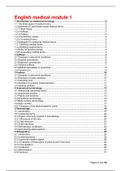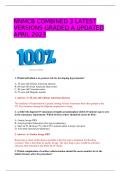Resume
Samenvatting medical terminology get connected module 1
- Cours
- Engels
- Établissement
- Artesis Plantijn Hogeschool Antwerpen (Artesis)
Samenvatting van het boek medical terminology get connected module 1 van het vak English medical.
[Montrer plus]













